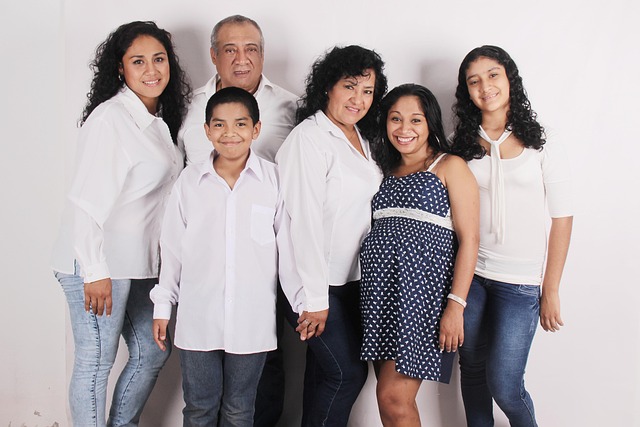Understanding custody arrangements is key to successful co-parenting post-divorce. Shared custody encourages both parents' active involvement, promoting stability and open dialogue. Joint custody guidelines emphasize prioritizing the child's well-being, aiding conflict resolution through clear communication, consistent routines, and regular check-ins. Effective co-parenting involves transparency, active listening, and validating each other's perspectives, with mediation facilitating agreements when disagreements arise. These strategies lead to harmonious custody arrangements, minimizing disruption for children and fostering a stable environment.
Fostering collaboration between co-parents is key to achieving smoother transitions for children after divorce or separation. This article explores crucial aspects of successful co-parenting, focusing on understanding the impact of various custody arrangements and implementing effective strategies. We delve into shared custody tips, enhancing open communication through parenting plans, and providing practical guidance on conflict resolution and mediation in joint custody situations. By adhering to these joint custody guidelines, parents can create a more stable environment for their children, ensuring their well-being post-divorce.
Understanding Custody Arrangements and Their Impact on Co-Parenting
When it comes to fostering collaboration between co-parents, understanding the dynamics of custody arrangements is paramount. Custody arrangements, whether it’s sole custody, primary custody, or shared custody (also known as joint custody), significantly influence how smoothly transitions between households can be managed. Effective co-parenting strategies rely heavily on clear communication and a mutual agreement regarding parenting plans after divorce. Shared custody tips encourage a cooperative environment where both parents have child custody rights and actively participate in the child’s life, fostering stability for the child.
Joint custody guidelines provide a framework for resolving conflicts and facilitating conflict resolution in co-parenting. These guidelines emphasize the importance of open dialogue, respect for each other’s decisions, and prioritizing the well-being of the child above all else. Custody mediation tips can help navigate complex situations, ensuring that both parents feel heard while making decisions that are in the best interest of their child. Effective co-parenting communication is key to avoiding disputes and creating a harmonious environment for the family.
Implementing Effective Co-Parenting Strategies for Smooth Transitions
Implementing Effective Co-Parenting Strategies for Smooth Transitions requires a commitment to open and honest communication. When co-parents can discuss their parenting plans after divorce in a respectful manner, they set the stage for successful shared custody tips. Joint custody guidelines encourage parents to prioritize the child’s best interests above their own, fostering an environment where conflict resolution in co-parenting becomes more manageable. Effective co-parenting communication involves clear and consistent messaging about routines, rules, and expectations.
Custody mediation tips suggest scheduling regular check-ins to discuss any changes or concerns. This proactive approach helps navigate potential challenges that may arise with custody arrangements. By adhering to these strategies, co-parents can ensure a smoother transition for their children, minimising the impact of the divorce on their daily lives.
Communication Tips for Open and Honest Parenting Plan Discussions
Open and honest communication is key to establishing a robust parenting plan and fostering healthy co-parenting strategies post-divorce. When discussing custody arrangements, both parents should strive for transparency and mutual understanding. Encourage regular meetings or calls dedicated solely to these conversations, ensuring each parent has an equal opportunity to voice their concerns, desires, and aspirations for their children’s upbringing.
Effective co-parenting communication involves actively listening, validating each other’s perspectives, and avoiding accusatory language. When crafting shared custody tips, consider joint custody guidelines that promote stability and continuity in the child’s life. Conflict resolution in co-parenting can be facilitated through mediation, where an impartial third party assists in navigating sensitive topics and reaching agreements. This approach not only respects individual rights but also prioritizes the best interests of the children involved.
Navigating Conflict Resolution and Mediation in Joint Custody Situations
Navigating conflict resolution and mediation is a crucial aspect of fostering successful collaboration between co-parents, especially in joint custody situations. When parents share physical custody of their children, open communication and fair dispute management are essential to ensure smooth transitions and minimal disruption for the kids. One effective co-parenting strategy involves establishing clear and detailed parenting plans after divorce, outlining responsibilities, and decision-making processes. These plans should be created jointly, considering each parent’s perspective while adhering to local child custody rights and joint custody guidelines.
Conflict resolution in co-parenting often requires a neutral third party, such as a mediator, to help facilitate conversations and negotiate agreements. Custody mediation tips emphasize active listening, empathy, and mutual respect during these discussions. The mediator guides parents through identifying the root causes of disagreements, exploring alternative solutions, and reaching compromises that prioritize the best interests of the children. By adopting these co-parenting strategies and seeking mediation when needed, separated parents can navigate custody arrangements more harmoniously, ultimately providing a more stable and supportive environment for their shared children.
Fostering collaboration between co-parents is key to achieving smoother transitions and ensuring the well-being of children involved in shared custody arrangements. By implementing effective co-parenting strategies, maintaining open communication, and resorting to mediation or conflict resolution when needed, parents can navigate joint custody situations successfully. These practices promote a stable environment for children and help preserve their sense of security and happiness during and after divorce, ultimately benefiting the entire family.
